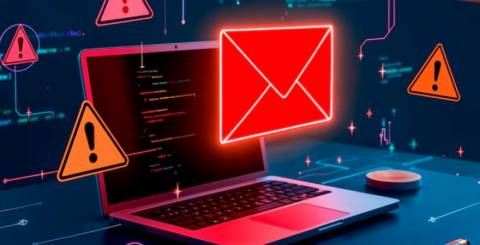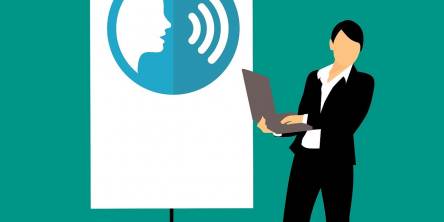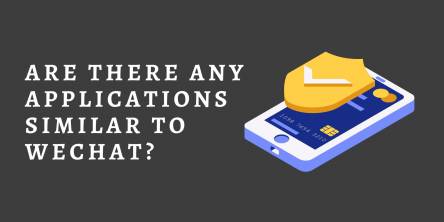Red Flags of a Phishing Email You Need to Know

Did you know that the leading cause of data breaches is phishing emails? It’s arguably the most common form of a cyberattack.
Falling victim to these scam emails can result in stolen personal information, compromised security for your devices and accounts, and even direct financial loss.
So in this article, we’ll go through everything you need to know about phishing emails: what are they, how to spot their red flags, and how to avoid falling prey to them.
What Is a Phishing Email?
A phishing email is a scam email, simply put.
It tries to “fish” for sensitive information by baiting or tricking you into revealing it.
These emails typically want information like your:
● Passwords
● Credit Card Numbers
● Home Addresses
● Social Security Details.
These emails try to look legitimate by pretending to be from trusted entities like banks, online retailers, or government organizations.
The ultimate goal is to deceive the recipient into taking action, such as clicking on a malicious link, downloading an infected attachment, or entering personal information into a counterfeit website.
These scams continue to grow more sophisticated, now blending clever social engineering tactics with technology.
10 Red Flags of a Phishing Email
So, how do you know if an email is a phishing email?
Watch out for these 10 red flags.
1. Generic Greetings
Emails from legitimate organizations typically address you by name.
Phishing emails are sent to countless people, and thus often start with impersonal greetings like “Dear Customer” or “Valued Member” or “To Good Sir/Ma’am.”
2. Urgent or Threatening Language
Arguably, the biggest reason people fall for phishing emails is because they (try to) create a sense of panic or urgency.
They’ll tell you that you need to act immediately—or else face the consequences. They’ll pretend that you’ll face things like:
● Account suspensions
● Password expiries
● Legal actions
The aim is for you to act (such as clicking their link, downloading their attachment, or replying with sensitive details) without carefully scrutinizing their email.
3. Too Good to Be True Offers
In the same vein, they can also create that sense of urgency by pretending that you’re about to miss out on an amazing offer.
They’ll tell you that you just won a lot of money or are eligible for an extremely valuable discount—and that you need to avail of it immediately, or else the offer expires.
As the saying goes, if it’s too good to be true, then it likely is.
4. Poor Grammar and Spelling Mistakes
Reputable companies rarely send out emails riddled with typos or awkward phrasing. If the message contains obvious errors, it’s a red flag.
5. Fraudulent Email Addresses
Phishing scammers want to look legitimate—and will, therefore, make their email addresses look very similar to that of actual organizations.
For instance, an email might appear to be from [email protected] but instead is from [email protected] (with the number “1” replacing the letter “l”).
6. Links Leading to Fake Websites
In the same vein, phishing emails often also aim to redirect users to fraudulent websites that look like those of legitimate organizations.
So, for example, they embed a link leading to thebankofamerica.com—trying to mimic the actual website of the Bank of America, which is bankofamerica.com.
Do not click on these links—hover over them first without clicking to preview the URL. Then, double-check that URL in your search engine (not your address bar, as copy-pasting the link will actually lead you to it) to see if that is the actual website of the organization it is purporting to be.
7. Unexpected Attachments
Phishing emails often include attachments containing viruses and malware. If you receive an unexpected attachment, especially one with unusual file extensions (.exe, .scr, or .zip), then do not download or open it.
8. Requests for Sensitive Information
Legitimate companies will never ask for sensitive details, like your password or social security number, via email. Any message that requests such information is most likely a scam.
9. Unsolicited Emails from Unknown Senders
If you weren’t expecting an email (like one from a contact or a newsletter you’re subscribed to), especially one that includes a link or attachment, then treat it with caution. Do not click on any of its links or download/open its attachments.
10. No Contact Information
A legitimate organization includes detailed contact information, like phone numbers, email addresses, or links to their official website—often at the bottom, in their email signature.
Phishing emails often lack these details or provide fake ones. Search for the actual contact info of the organizations they are claiming to be and double-check it with those provided in the email.
How to Protect Yourself Against Phishing Emails
If you know your way around a computer and the internet, you may think you’re knowledgeable enough not to fall for phishing emails.
However, data reveals that Gen-Z and millennials comprise the largest demographic of victims—supposedly the most tech-savvy group.
So, no matter who you are, make sure that you’re doing these things to protect yourself against phishing emails:
1. Think Before You Click
The first—and most important step—is to simply be aware. Do not click on any link, download/open any attachment, or reply with any information without first verifying the sender.
Make it your second nature to scan for red flags with every email you receive!
2. Use a Reliable Antivirus Program
Antivirus software can help detect and block phishing attempts, especially those carrying malicious attachments. Keep your antivirus updated regularly for maximum protection. For most Windows users, Windows Defender is more than enough.
3. Avoid Public Wi-Fi
When you’re using public Wi-Fi, people (such as the Wi-Fi network’s owner) can easily intercept your data. This means that it can see which websites you’re browsing or the log-in credentials or messages you're typing.
So, when using public Wi-Fi, make sure to use virtual private networks (VPNs) like Surfshark.
4. Regularly Update Your Software
Software updates often include improvements to code or network vulnerabilities that cybercriminals can exploit. So, always have your operating system, browsers, and other applications updated. If there’s an option to automatically install updates, it’s wise to keep that on.
5. Report Phishing Emails
Most email providers have a “Report Phishing” option. Reporting these messages helps improve spam filters and also warns others about ongoing scams.
After all, the best way to protect people against phishing scam emails is to eliminate them as much as possible!
6. Enable Two-Factor Authentication (2FA)
In the event that your account is compromised, having 2FA enabled will still block unauthorized access. Just make sure to change your login credentials immediately if you know your login credentials were stolen!
7. Educate Yourself and Others
Finally, remember that knowledge is your best defense.
Cybercriminals are always thinking of new ways to steal people’s data, so keep yourself updated on the latest news and trends in cybersecurity.
Then, share your knowledge with loved ones!
Final Thoughts
Phishing emails may be a persistent threat—but with enough vigilance, they can easily be avoided. Keep these red flags in mind, and ensure that your information, privacy, and money all stay safe!
Similar Articles
As more businesses move toward cloud-first strategies, unified communications (UC) systems are increasingly in the spotlight.
Learn if WhatsApp Web works without a phone, how multi-device login helps, and what limits apply when using WhatsApp on your computer.
Faxing might seem like a thing of the past, but it’s still a necessity for many businesses. Whether you work in healthcare, legal services, real estate, or any industry that relies on secure document transmission, faxing is far from obsolete.
Do you ever feel like no one hears what you're saying? In today's constant digital chatter, where messages flood in faster than you can keep up, just speaking loudly isn't enough. You need communication skills beyond being loud, skills that can turn information into a real impact and transform connections into collaborations.
Super apps refer to those tools or apps that provide several features in a single application to eliminate the need to switch apps. Super app is one platform for all your needs.





